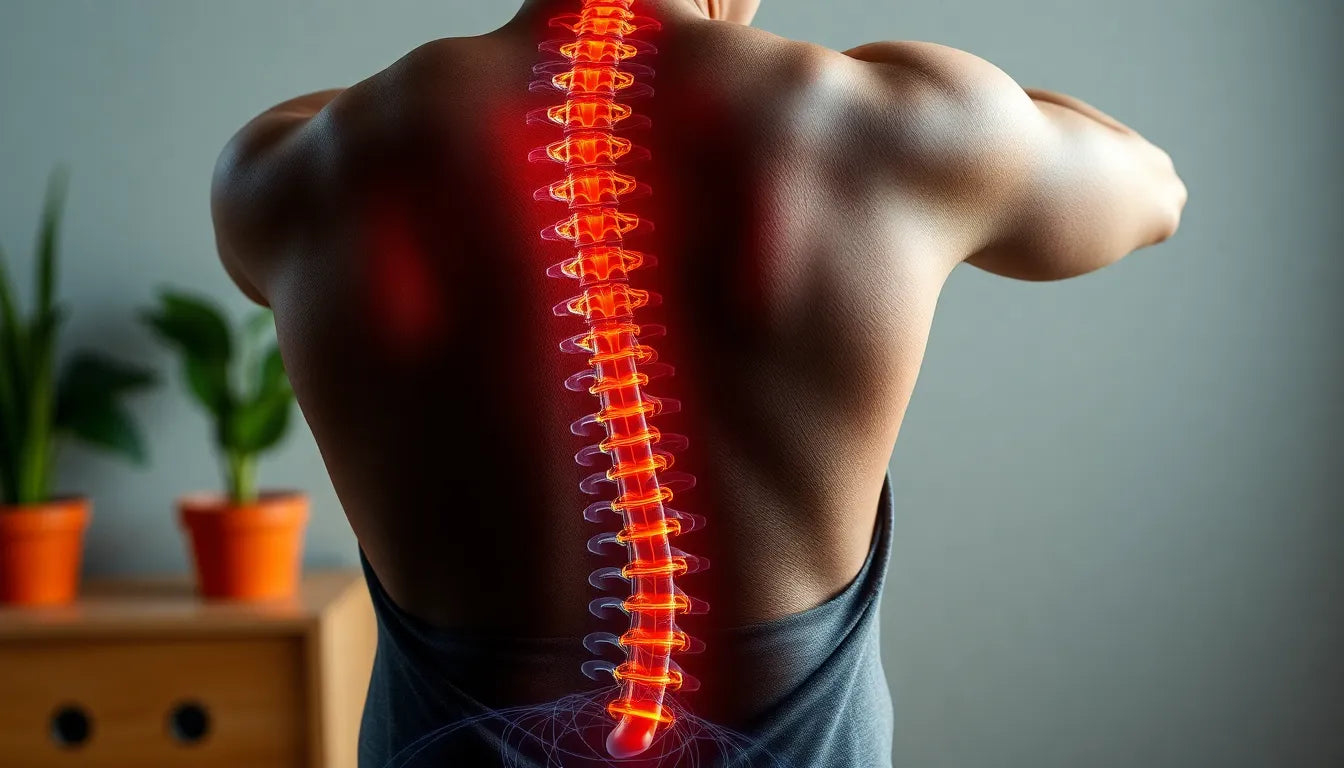Groin flexibility is a crucial aspect of overall mobility and plays a significant role in injury prevention. Whether you're an athlete, an older adult, or someone recovering from an injury, maintaining flexibility in the groin area can significantly enhance your physical performance and comfort. The groin muscles, located in the inner thigh region, are responsible for stabilizing the hips and legs, making them essential for a wide range of daily activities and sports.
One common issue related to tight groin muscles is discomfort during physical activities, such as running, cycling, or even walking. This discomfort can lead to a decreased range of motion and an increased risk of muscle strains. When the groin muscles are tight, they can restrict movement, causing the body to compensate in other areas, which may result in added stress and potential injuries. Therefore, incorporating regular groin stretching exercises into your routine is vital for maintaining flexibility and preventing these issues.
Benefits of groin stretching exercises
Engaging in regular groin stretching exercises offers numerous benefits that contribute to both physical well-being and athletic performance. One of the primary advantages is an improved range of motion. By increasing the flexibility of the groin muscles, you can move more freely and efficiently, enhancing your ability to perform various physical activities. This increased range of motion not only aids in athletic performance but also supports everyday movements, making tasks like bending, squatting, and reaching more comfortable and accessible.
Additionally, groin stretching exercises can significantly reduce pain and stiffness in the groin area. Tight muscles often lead to discomfort and can even cause pain during movement. Stretching helps to alleviate this tension, promoting relaxation and comfort. Over time, consistent stretching can lead to a noticeable reduction in groin-related discomfort, allowing you to engage in activities without the hindrance of pain.
Furthermore, incorporating groin stretching exercises into your routine can help prevent future injuries. Flexible muscles are less prone to strains and tears, as they can absorb stress more effectively. By strengthening and stretching the groin muscles, you enhance their resilience, reducing the likelihood of injuries during physical activities. This is particularly beneficial for athletes who frequently engage in intense training and competitions, as well as for older adults who may be more susceptible to muscle strains.
In conclusion, groin flexibility is essential for maintaining overall mobility and preventing injuries. By regularly performing groin stretching exercises, you can enjoy an improved range of motion, reduced pain and stiffness, and enhanced protection against future injuries. Whether you're an athlete striving for peak performance or someone looking to maintain an active lifestyle, prioritizing groin flexibility through consistent stretching is a valuable investment in your physical health.
exploring effective groin stretching techniques
To fully benefit from groin stretching exercises, it's essential to understand the different types of stretching techniques available. Primarily, these techniques are categorized into dynamic and static stretching, each serving distinct purposes. Dynamic stretching involves active movements that help increase blood flow and muscle temperature, preparing the body for more intense physical activity. In contrast, static stretching involves holding a stretch for a prolonged period, which helps to lengthen muscles and improve flexibility over time. Both techniques are valuable in their own right, and incorporating a mix of both can lead to optimal results in enhancing groin flexibility.
Before engaging in any stretching routine, it's crucial to warm up to prevent injuries. A proper warm-up increases blood circulation, which in turn prepares the muscles for stretching by making them more pliable. Simple activities such as brisk walking, light jogging, or cycling for 5-10 minutes can effectively warm up the body and set the stage for a productive stretching session.
standing groin stretch
The standing groin stretch is a straightforward exercise that targets the inner thigh muscles. To perform this stretch, stand with your feet wide apart. Bend one knee while keeping the other leg straight, ensuring your toes are pointing forward. Hold this position for about 10 seconds, and then switch to the other side. Repeat this sequence 3-4 times for each leg. This stretch not only improves flexibility but also enhances balance and stability, making it a beneficial addition to any fitness routine.
low lunge stretch
The low lunge stretch is an excellent exercise for stretching the hip flexors and groin area. Begin by stepping one foot forward into a lunge position, ensuring that your back leg remains straight. You can either hold this position for a deeper stretch or perform 5-10 gentle pulses to add a dynamic element. This stretch is particularly effective in enhancing lower body mobility, making it ideal for athletes and individuals looking to improve their range of motion.
butterfly stretch
The butterfly stretch is a classic exercise that effectively opens up the hips and stretches the inner thighs. To perform this stretch, sit on the floor with the soles of your feet pressed together. Gently press your knees towards the ground while keeping your back straight. Hold this position for 15-30 seconds, focusing on deep, controlled breathing. Regular practice of the butterfly stretch can lead to significant improvements in hip flexibility, which is crucial for various physical activities.
spiderman stretch
The spiderman stretch is a dynamic exercise that targets the hips and groin, promoting functional movement. Start in a plank position, then bring one foot up beside the hand on the same side. Gently move your hips in a circular motion to deepen the stretch, holding the position for about 15 seconds before switching sides. This stretch not only enhances flexibility but also strengthens the core and stabilizing muscles, contributing to improved athletic performance.
side squat
The side squat is an effective exercise for strengthening and stretching the groin muscles. Begin by standing with your feet wide apart. Bend one knee while keeping the other leg straight, similar to a squat motion but performed laterally. Alternate sides and repeat this exercise 10 times. The side squat not only enhances lateral movement but also builds strength in the lower body, making it a valuable component of any fitness regimen.
resistance band lateral walk
Incorporating resistance bands into your stretching routine can add an extra challenge and engage the groin muscles more effectively. For the resistance band lateral walk, place a resistance band around your ankles and take sideways steps. Perform this exercise for 10-15 steps in each direction. The resistance band lateral walk not only improves stability but also strengthens the groin muscles, contributing to overall lower body strength and balance.
By integrating these exercises into your regular fitness routine, you can unlock significant improvements in groin flexibility, leading to enhanced performance, reduced discomfort, and a lower risk of injury. These exercises are designed to be accessible to individuals of all fitness levels, making them a versatile addition to any workout plan.
strengthening groin flexibility with targeted exercises
Continuing our exploration of effective groin stretching exercises, it's crucial to incorporate a variety of movements that not only stretch but also strengthen the groin muscles. Strengthening these muscles can significantly enhance their flexibility, reduce the risk of injuries, and support overall mobility.
lying leg raise
The lying leg raise is a simple yet effective exercise for strengthening the core and groin muscles. To perform this exercise, lie flat on your back with your legs extended. Slowly lift one leg towards the ceiling while keeping it straight. Hold the position for a few seconds before gently lowering it back down. Repeat this movement 10 times per leg. This exercise not only targets the groin but also engages the core, making it beneficial for rehabilitation and overall strength building.
combining strength and stretching for optimal results
For comprehensive groin rehabilitation and flexibility, it's beneficial to combine stretching exercises with strengthening movements. Incorporating exercises such as bridges, planks, and lunges can complement your stretching routine by building core and leg strength, which supports the groin muscles. This holistic approach ensures that the muscles are not only flexible but also strong and resilient, reducing the likelihood of strains and injuries.

Lumbar support belt
Provides lower back stabilisation and relief for pain and tension during activity or rest.
recommended routine and frequency
To achieve the best results in improving groin flexibility and strength, aim to perform these exercises 2-3 times per week. Each session should last approximately 10-15 minutes, allowing ample time to engage in both stretching and strengthening exercises. Consistency is key, and gradually increasing the intensity and duration of your routine can lead to significant improvements over time.
frequently asked questions
how often should I perform groin stretching exercises?
Aim to incorporate groin stretching exercises at least twice a week. Depending on your fitness level and goals, you may choose to increase the frequency to enhance flexibility and strength.
is it normal to feel discomfort during stretches?
Experiencing mild discomfort during stretching is normal as the muscles are being lengthened. However, it is important to avoid any pain. If you feel pain, reduce the intensity of the stretch or modify the exercise.
can these exercises help with groin pain from sports activities?
Yes, these exercises are designed to alleviate groin pain and prevent future injuries. They enhance flexibility and strength, which can reduce the strain on the groin during sports activities.
should I use any equipment for these exercises?
While most exercises can be performed without equipment, incorporating resistance bands can enhance certain exercises by adding an extra challenge and engaging the groin muscles more effectively.
what should I do if I experience pain during stretching?
If you experience pain during stretching, stop immediately. It is important to listen to your body and avoid pushing beyond your limits. If the pain persists, consult a healthcare professional for guidance.
By following these guidelines and incorporating a balanced routine of stretching and strengthening exercises, you can effectively improve your groin flexibility and overall mobility, leading to a healthier and more active lifestyle.

Men's Posture Shirt™ - White
Activates muscles and relieves pain; supports better posture for work, exercise, and daily life.


















